by Federico Giannini, Ilaria Baratta , published on 16/06/2016
Categories: Exhibition reviews
/ Disclaimer
ecension of Steve McCurry's "Football and Icons" exhibition in Castelnuovo Magra at the Tower of the Castle of the Bishops of Luni.
Article originally published on culturainrivera.it
Great photography returns to Castelnuovo Magra, and it does so with another major exhibition, following last year’s one dedicated to Elliot Erwitt: this time Steve McCurry is on stage with his Football and Icons. This is the first time that the famous American photographer has had an exhibition dedicated to the theme of soccer. And since the European Championships are being played this year, the subject of the exhibition seems almost chosen on purpose. However, those expecting an exhibition of glittering photographs celebrating great champions caught in their sporting feats will be confronted with a path that is totally at odds with expectations: and it does not necessarily result in disappointment. Because in Football and Icons there are no great champions, there are no modern, technological stadiums, there is no frenzied cheering of the world’s most important arenas, there are no scenes of memorable games that have entered the collective imagination. There is, however, genuine passion, happiness, colors, emotions. Because for Steve McCurry, a photographer who has traveled the world, soccer is essentially street soccer.
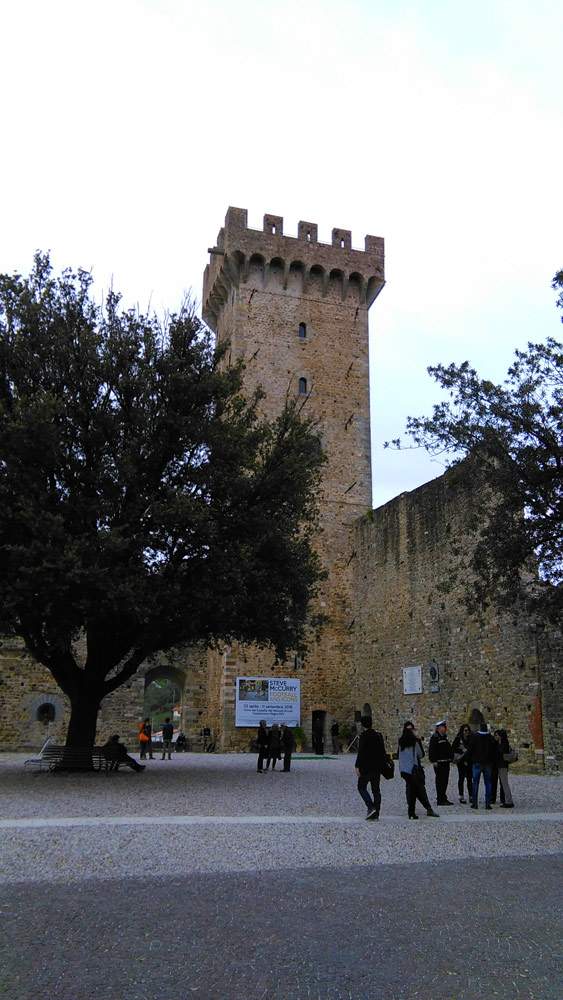 |
| The Tower of the Castle of the Bishops of Luni |
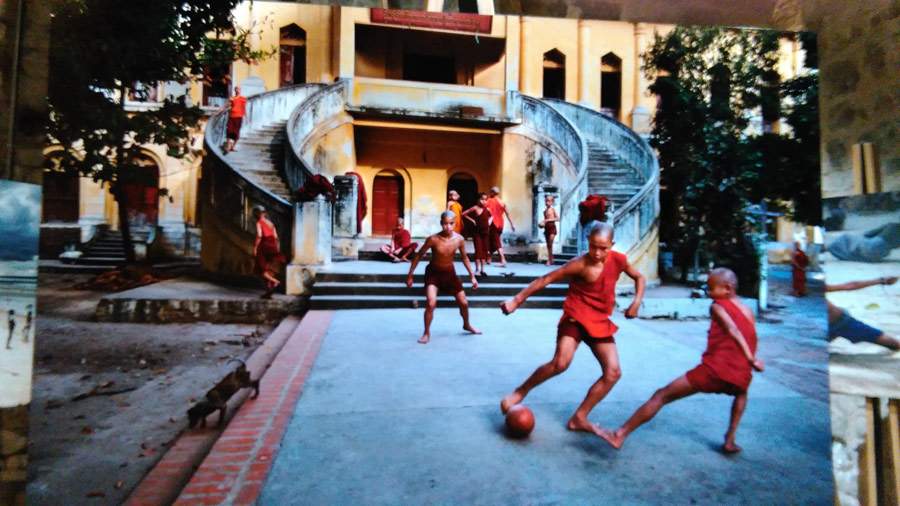 |
| Steve McCurry, Burma, 2010 |
The exhibition spans the six floors of the Tower of the Castle of the Bishops of Luni: the exhibition venue is certainly not the easiest given the steepness of the stairs, and it is impassable for those with walking difficulties, but it is nonetheless evocative and the organization has made the best use of the cramped spaces to set up a coherent itinerary, with lights positioned to allow proper lighting of the environment without forcing visitors to observe the images from “preferential” viewpoints, and with the narrative of the exhibition developing essentially by themes. There is soccer played in war zones (Lebanon in the 1980s, Afghanistan in the 2000s), there are children from poor cities in Asia, Africa or the Middle East who make do with improvising matches with the little they have at their disposal, there is soccer as a moment of leisure that unites all the peoples of the world: from the Buddhist monks of Burma to the shepherds of Ethiopia via countries on every continent, the game of soccer breaks down all barriers, brings joy and hugs even where there would be little reason to smile, brings equality, passion, healthy competition.
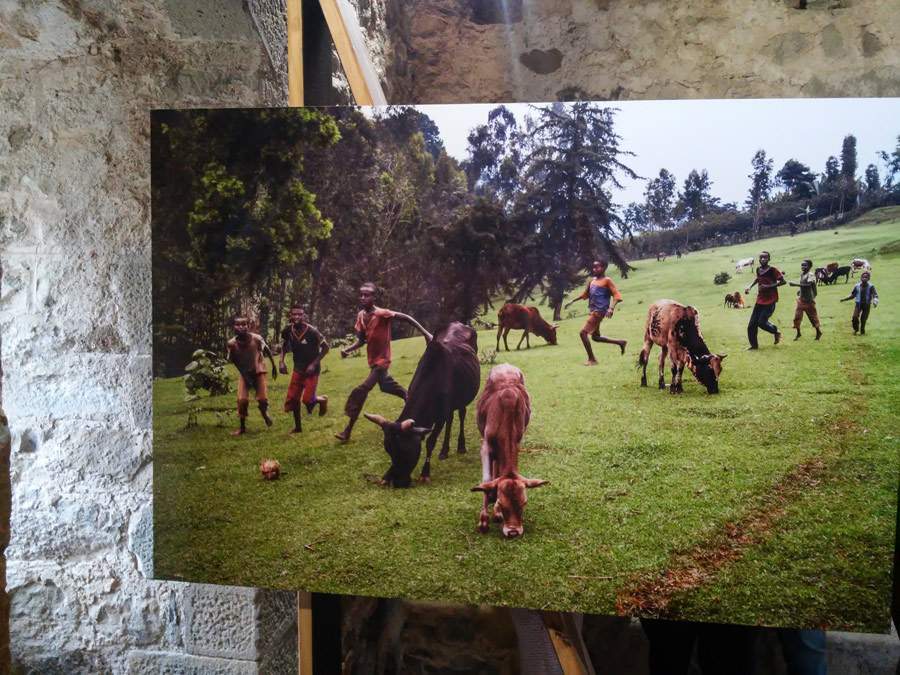 |
| Steve McCurry, Amara Region (Ethiopia), 2014 |
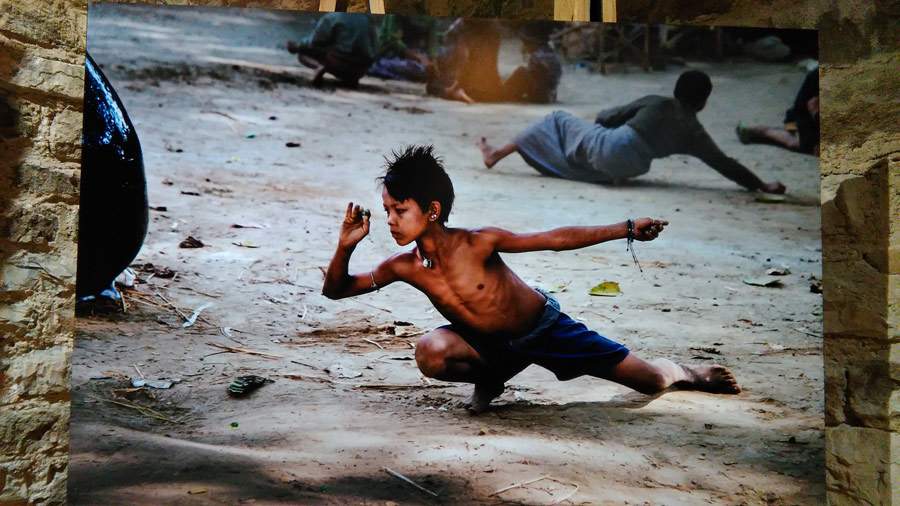 |
| Steve McCurry, Mandalay (Burma), 2013 |
The curator, Biba Giacchetti, places a photo at the beginning of the path that strategically encompasses the entire meaning of the exhibition. The protagonist is a child kicking a ball through the colorful alleys of an ancient Moroccan city: he is running after the ball, smiling, he is having moments of happiness and lightheartedness. Because, after all, you don’t need much to play ball. All that is needed is an appropriate disposition of mind, inclined precisely to lightheartedness, all that is needed is cheerfulness, a ball and a few smiles. Nothing else is necessary: for the field and the number of players one can adapt to any situation. There can be two of you in a cold and arid backyard in Rybinsk, Russia, you can use a hillside in Ethiopia being very careful to dribble even grazing cows, you can even dribble solo on the uncomfortable cobblestones of a street in Trinidad, Cuba. For Steve McCurry, soccer is the very essence of soccer. Anything outside the logic of a game that can be improvised anywhere is, for the U.S. photographer, a detail not worth caring about: fields of fresh, well-cut grass, cups and official competitions, uniforms fresh out of the washing machine, sponsors, trophies, organized cheering. None of these elements find a place in Steve McCurry’s photographs.
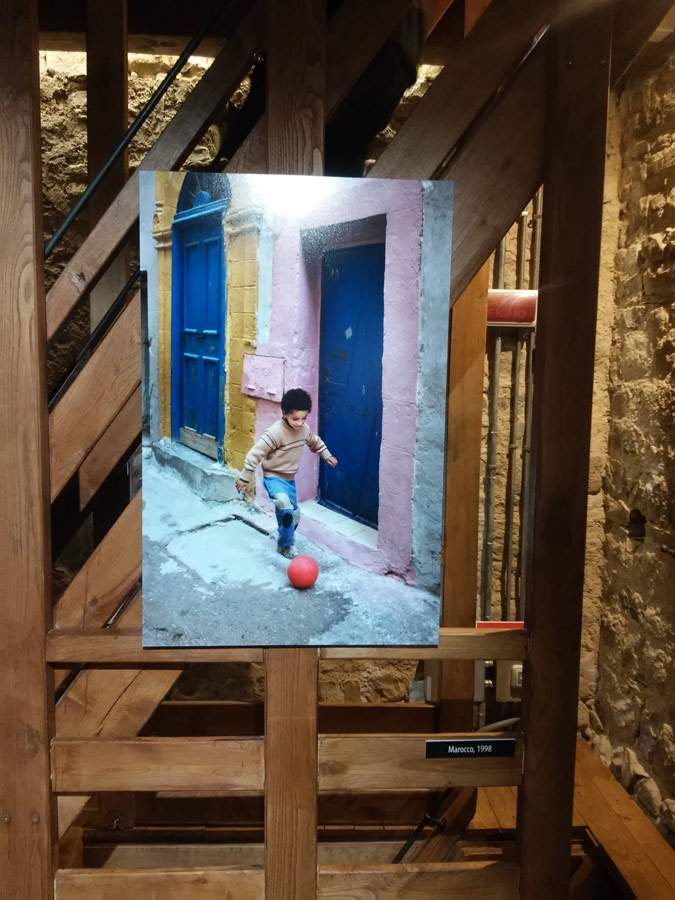 |
| Steve McCurry, Morocco, 1998 |
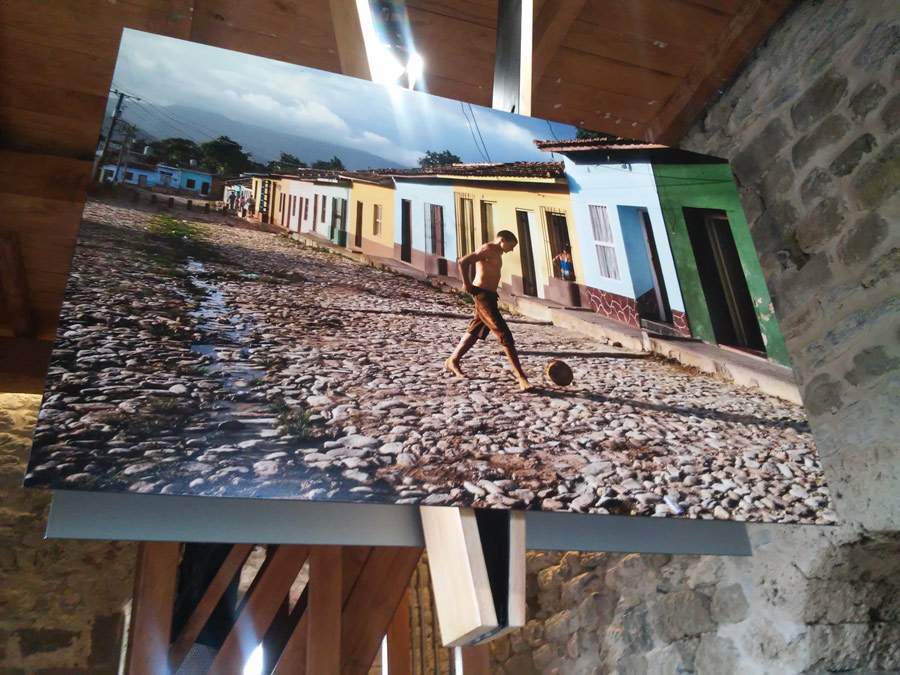 |
| Steve McCurry, Trinidad (Cuba), 2015 |
Above all, there are two moments around which the exhibition aims to make the visitor reflect: soccer as a moment of aggregation and soccer as an antidote against adversity. The guiding thread is the spontaneity that characterizes Steve McCurry’s shots: clear of the controversy, even recent, that has arisen about whether or not the postproduction work carried out by the photographer’s studio on the images is appropriate, of the works on display at Castelnuovo one appreciates above all the feeling of authenticity that animates them. The shots depict moments of daily life in various parts of the globe, the protagonists move in total freedom producing themselves in completely natural grimaces, poses and attitudes, revealing through glances and gestures that soccer is a game that unites peoples around the world. The images, moreover, cover a rather wide span of Steve McCurry’s career: ranging from photographs of the 1980s to more recent achievements. The Rybinsk photo, for example, dates back to December 2015.
And if soccer is a moment of aggregation, it also becomes so when teams compete, as anticipated, in war-torn areas. Visitors intent on exploring this theme will find several particularly telling images on display in the Football and Icons itinerary. There is a photo dating back to 2003 depicting men grappling with a ball in front of the Bala Hisar Fort near Herat, Afghanistan, at a time when the war was raging, but above all there are images of Lebanon in the 1980s, depicting young boys intent on playing among buildings reduced to piles of rubble and children clinging, for fun, to the remains of an anti-tank gun. Sharp are the contrasts between the results of the war and the colors brought by the children: in the first photo the gray of the rubble is contrasted by the bright hues of the children’s clothing, and in the second case the brutality of the war is literally overwhelmed by the children’s games and somersaults around the now inoffensive cannon. Highly symbolic shots, which move the viewer to reflect, even without the aid of didactic apparatus (the exhibition in fact, and this is a negative aspect, is totally devoid of it: the only support that directs visitors along the path are the tags bearing the location of the photograph and the year of the shot). In his blog, Steve McCurry quotes legendary footballer Bill Shankly: “Some people think soccer is a matter of life and death. But I can guarantee that it is a much more important matter.” From these images we derive the meaning of these words and why soccer is so important.
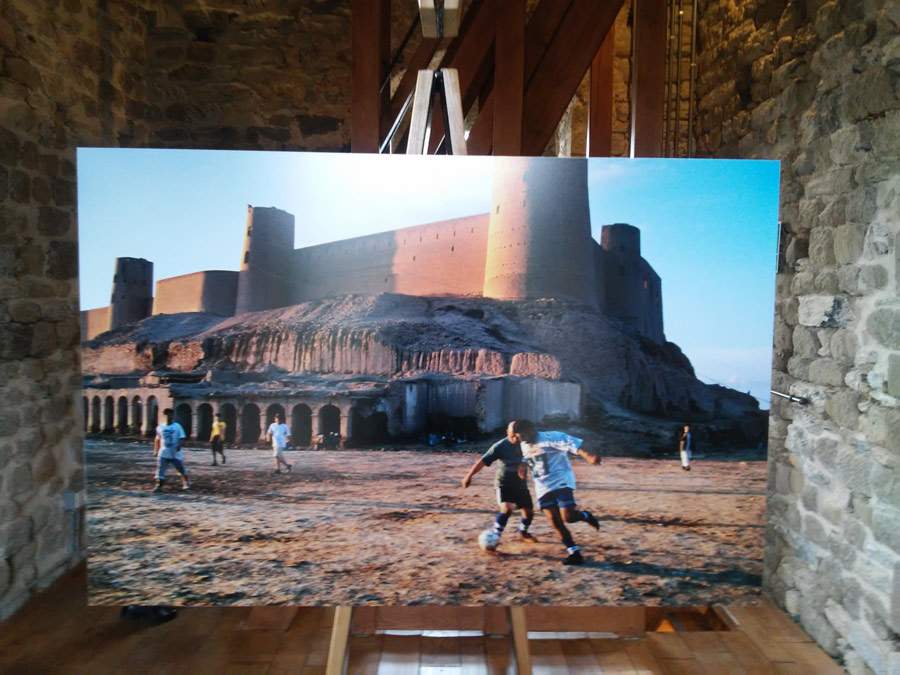 |
| Steve McCurry, Bala Hisar Fort, Herat (Afghanistan), 2003 |
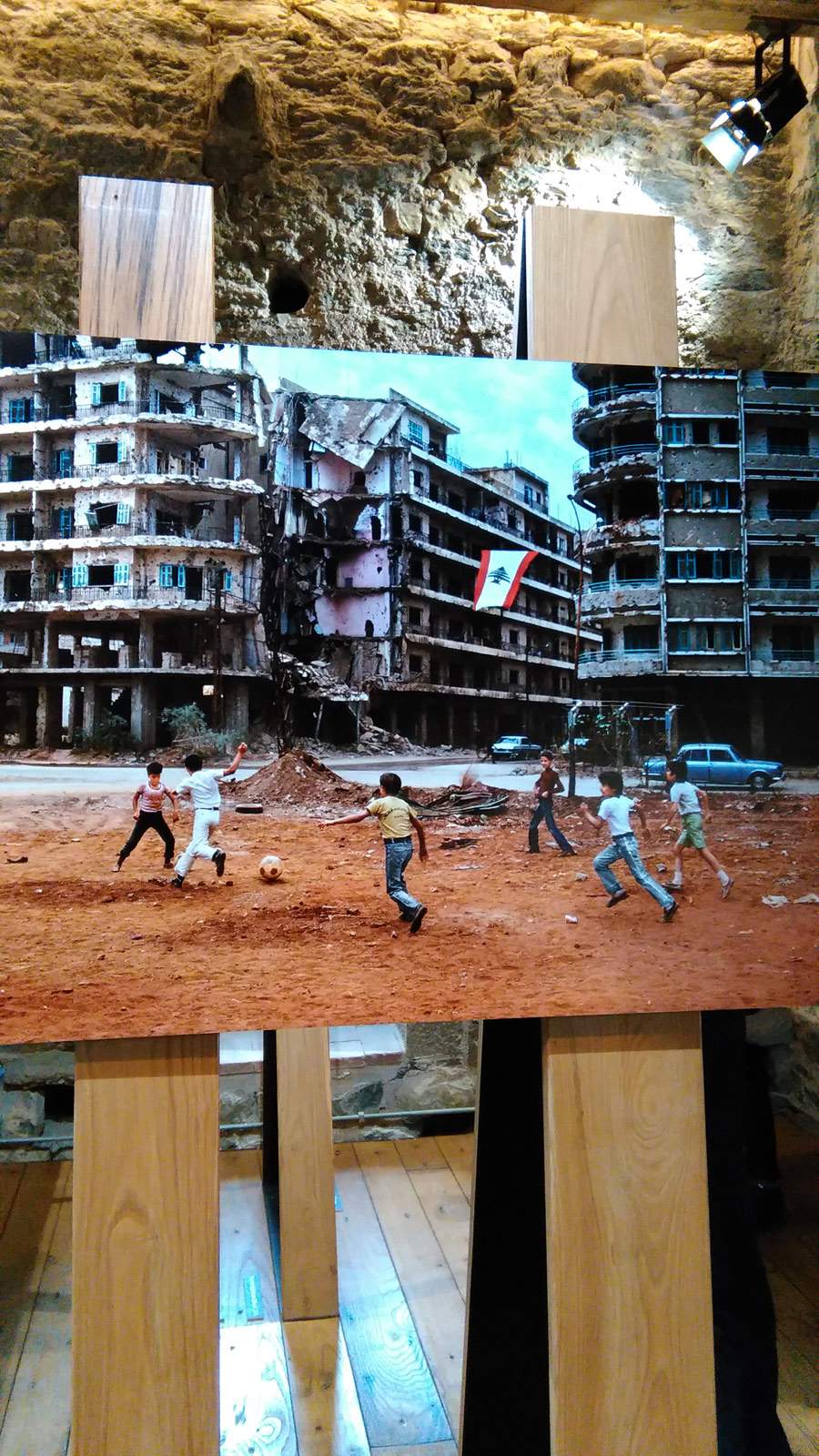 |
| Steve McCurry, Beirut (Lebanon), 1982 |
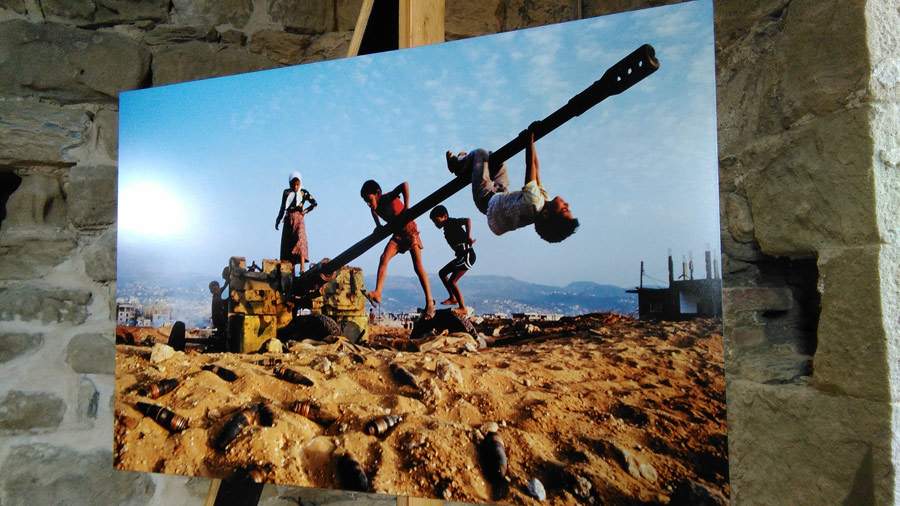 |
| Steve McCurry, Beirut (Lebanon), 1982 |
The exhibition ends on the top floor of the Tower with the section reserved for Icons, the images that made Steve McCurry famous: the 1984 Afghan Girl stands out above them all. As to why the decision was made to end the tour with this quick review instead of offering other football-themed photographs (or instead of directly closing the exhibition) one can certainly question, but there remains no doubt that Football and Icons is an exhibition that succeeds in expressing the best of theart of Steve McCurry by telling it through a precise thematic choice, exhibiting famous shots and unpublished photos, and allowing the visitor to leave the Tower of the Castle of the Bishops of Luni with an enlarged overview of what the game of soccer is (or should be), as well as, of course, of Steve McCurry’s photography, which in Castelnuovo we can therefore get to know under an original lens never before experienced in an exhibition.
Warning: the translation into English of the original Italian article was created using automatic tools.
We undertake to review all articles, but we do not guarantee the total absence of inaccuracies in the translation due to the program. You can
find the original by clicking on the ITA button. If you find any mistake,please contact us.




































